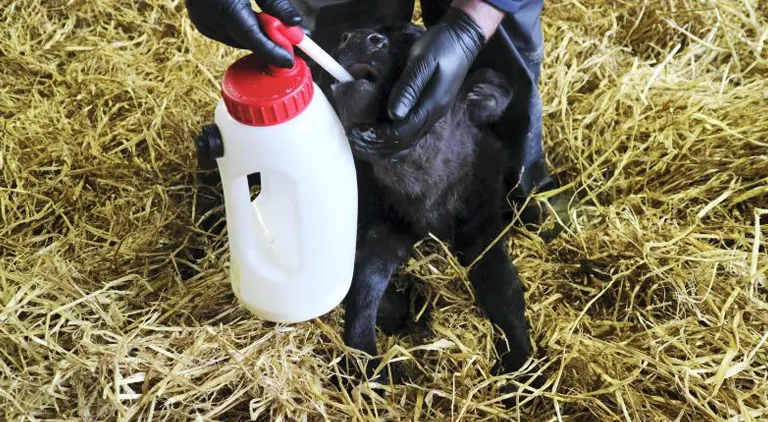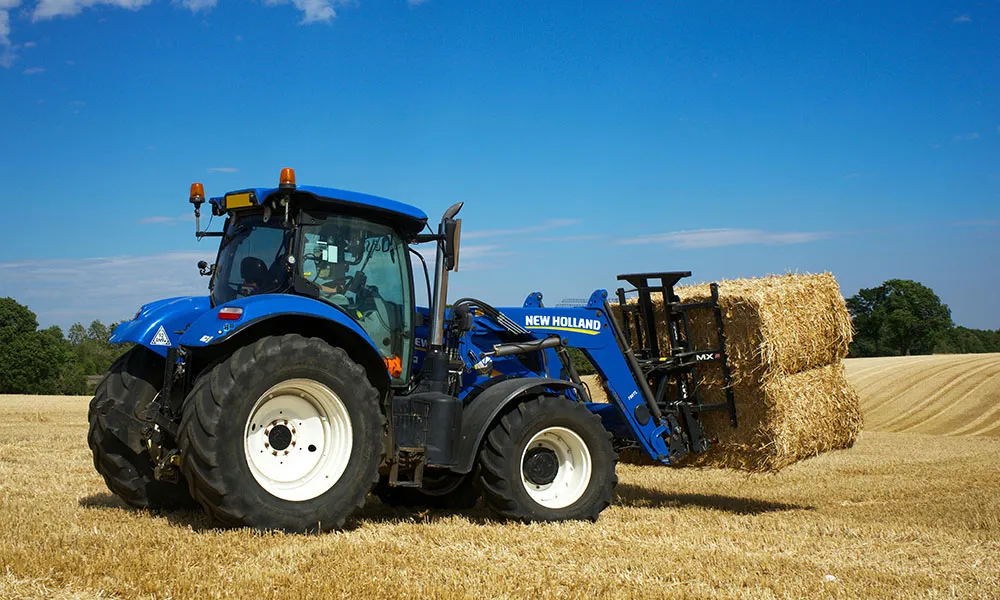
This week Vet Sarah Ryan continues her advice on calving by talking through how vitally important colostrum is to the new born calf.
Colostrum
So hopefully at this point we have a healthy calf on the ground, delivered safely! The most important thing on the list now is of course colostrum. I will say it again: colostrum. And once again for good measure colostrum!
Pre-Calving to ensure Quality Colostrum
What you do before calving is going to affect the quality and quantity of colostrum. Having animals in good shape (fit not fat) before calving will ensure that their bodies are ready to produce sufficient quantities of colostrum after calving. Then pre calving minerals will play a vital role in the quality of the colostrum, a balanced diet including minerals over the last two months of gestation is essential.
You can discuss with your vet or nutritionist the best diet to meet your farms needs. You can also improve it by vaccination against viral scour between 12 and 3 weeks before calving. If you have had a problem with E.coli, rotavirus or (dare I say it) coronavirus in your calves in previous years or this year, it's well worth a conversation with your vet about using these measures for prevention.
Alternatives to Colostrum
I get asked a lot about substitutes for colostrum. Of course you cannot beat the real thing, especially because animals will be exposed to diseases on your farm. Therefore, if you need a replacement try some from your herd. Next up would be to use some from a farm whose disease status you are aware of (johnes free). Where possible, you should choose from a farm where they vaccinate for scour. If you can't get colostrum from a farm, move along to your artificial supplements.
Timing
Next is timing. I am sure you have heard the ‘1,2,3’ phrase plenty of times, but it wouldn’t be an article on colostrum without it. 1. Feed the first milking 2. Feed within 2 hours of birth where possible, or at least ensure a good suck when it comes to beef cattle 3. Give 3 litres within the first 2 hours (this doesn’t need to be all in one go as sometimes it bloats up smaller calves and they don’t get up for a while after…a bit like me after the Christmas dinner!). If the calf is weak or does not seem to be sucking well you can also milk the cow and try using a bottle. That's none too simple in beef cattle, I know, so watch you don’t get a kick trying to milk her!
Stomach Tubing
If the calf is reluctant to suck a bottle, or if you do not have time to ensure it sucks and receives adequate colostrum; you may have to use a stomach tube! I know many dairy farmers routinely stomach tube, but I work in primarily beef practice so it's not something some farmers would be doing every day. Therefore, they are often nervous of doing it. I would definitely recommend discussing it with your vet, or getting them to show you how to do it. Nonetheless, I will run through it quickly here.
What is very important is (as usual) hygiene.
Make sure you store your colostrum in a clean bucket and use a stomach tube that’s specific to new-borns.
Obviously, it wouldn’t be a great idea to use the same one you use on scouring calves etc.!
Give the tube a rinse with warm water before you use it. This will clean it.
Also, you should soften the tube a little before you use it. You can also lubricate the end of the tube using a small bit of milk.
You can measure the distance to place the tube by placing it from the calf’s mouth to its elbow, this is approximately the distance the tube will have to pass.
The (Trusti Tuber stomach tube has a handy guide for measuring the distance.)
Then slowly pass the tube (clip closed still) ensuring the you feel along behind the windpipe to feel the tube passing.
If you feel something beneath your fingers you are in the right place. The windpipe is hard so if it goes down there you won’t feel anything (except distress if you end up putting the milk down there!).
When you’re sure you have it in the right place, release the clip.
When removing the tube, pull it out and downwards to ensure no milk flows down the windpipe on removal.
And always clean your tube and have it ready for the next time.
I think there should be a prize for whoever counts the number of times I have said "colostrum" in this article!
Story Time
A quick one true story about stomach tubing... I got a call one evening from a farmer in a panic. He had put 2 litres of milk straight into a calf’s lungs. He turned the calf upside down and the milk just flowed back out. We put him on medication to prevent pneumonia for about a week and somehow or other he actually survived!!! But please don’t try that one at home!
Chat soon,
Sarah










